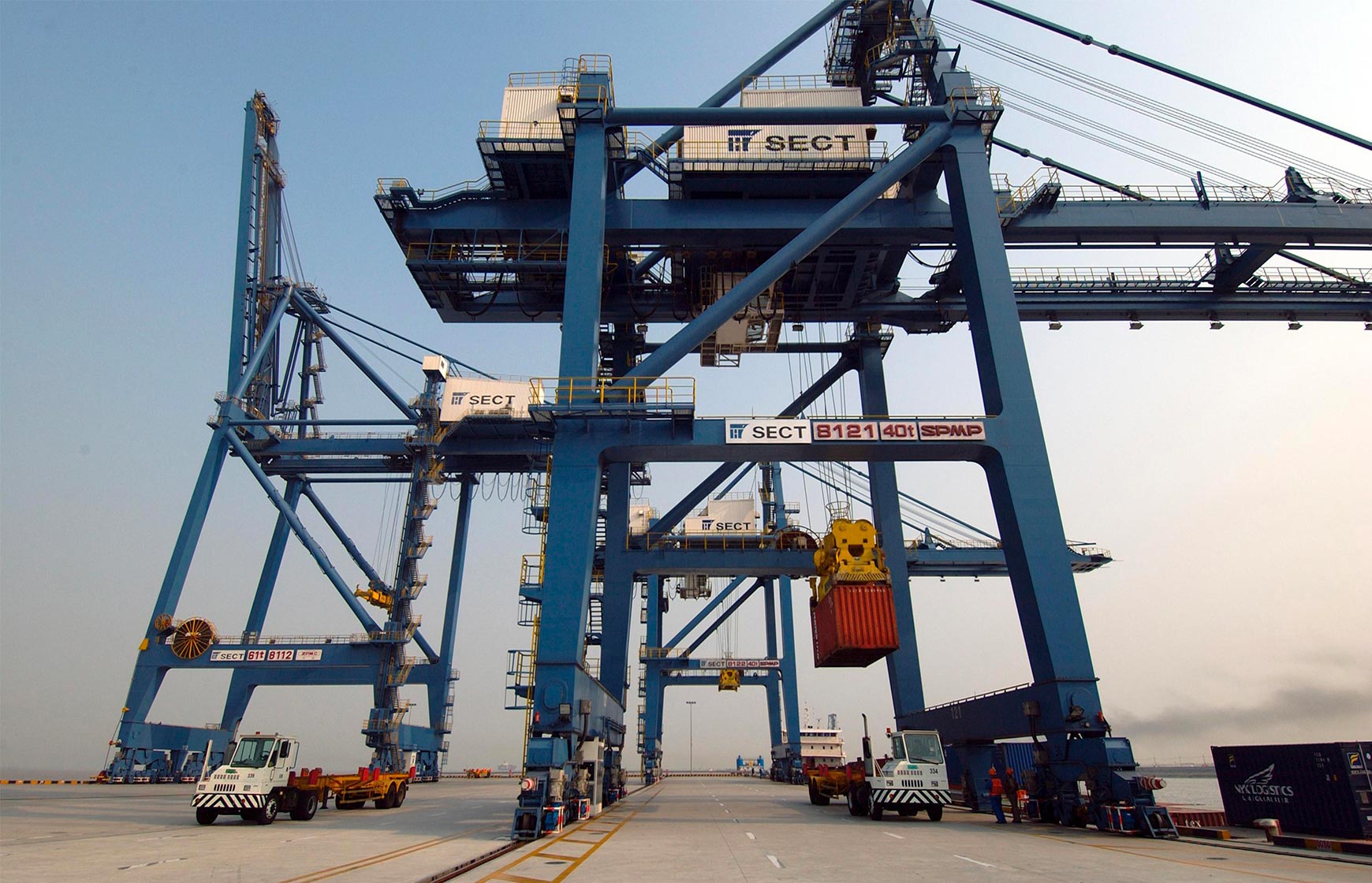
Our Terminal
Established in September 2002, SECT (Shanghai East Container Terminal) is a joint venture between APM Terminals (49%) and Shanghai International Port Group. in Waigaoqiao port area of Shanghai.
Superior Geographical Location
The terminal is located to the southeast of the Waigaoqiao Port Area, Pudong New Area, Shanghai, just 80 kilometres from the mouth of the Yangtze River. The port area is adjacent to the Shanghai Outer Ring Road, the Middle Ring Road and the Hu-Chong-Su River Crossing Channel, which provides rapid transport connections for inbound and outbound goods.
Changxing Island act as a natural barrier against wind, sea and rain. The front of the pier is less windy and suitable for long-term loading and unloading operations.
Equipment & Facilities
- Annual capacity: 4m TEU
- Total Area: 1.55 million m2
- Storage yard: 980,000 m2 (100,000 TEU)
- Deepsea Quays: 1250m
- Barge Quay: 187m
- Draft: 14.2m
- Cranes: 15 super-Panamax STS cranes (lifting capacity of 61 tons; outreach of 63 meters/23 containers; width of 27 meters). 2 additional cranes (lifting capacity 40 tons)
- RTGs: 48 (5 container stacking height)
Superior Connectivity
The terminal currently serves around 50 shipping line services covering the Americas, the Middle East, Southeast Asia, Japan, India, Taiwan and other places.
Over recent years, the company has continuously expanded its service offering, with the successful launch of, for example, door-to-door empty container yard, and the Waigaoqiao-Yangshan inter-port linkage to meet customer needs.
Environment
While pursuing first-class services, the company also puts environmental considerations at the top of its agenda and translates its corporate social responsibilities into practical examples. For example, over a decade ago, the company electrified its 48RTGs, greatly reducing fuel consumption and emissions.
Technology
SECT was the first terminal in China to enable smart gates for trucks entering the port. These use the world's leading intelligent container number identification system and RFID scanning technology and work in tandem with an EDI electronic data exchange system. It can quickly transmit operational information about the container status, reduce error rates caused by manual input, and speed up transactions.
APM Terminals Dashboard Login
Creating an APMTerminals.com account allows you to:
- Subscribe to our Global or Terminal Newsletters
- Set up Terminal Alerts (SMS or Email)
- Save import containers to your Container Watchlist and set up container Email Notifications
- Use our integrated Truck Appointment System - limited terminals
- Request additional services online - limited terminals
APM Terminals Dashboard Login
Creating an APMTerminals.com account allows you to:
- Subscribe to our Global or Terminal Newsletters
- Set up Terminal Alerts (SMS or Email)
- Save import containers to your Container Watchlist and set up container Email Notifications
- Use our integrated Truck Appointment System - limited terminals
- Request additional services online - limited terminals